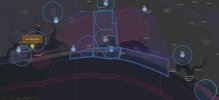I have an Air 2S, and normally fly it at my ranch, well inland. I'm a fairly experienced pilot. We're going to the beach next week (30A area of Florida), and my kids and grandkids really want me to bring it. Both for fun (they have all flown it before at the ranch), and to look for sharks in the water. We will be beachfront, and have a good sized deck to take-off and land on. No sand landings (hopefully!). It will never be flown without me being right there.
I baby my drone. I keep it clean, don't abuse it, etc etc. Any risk from flying at the beach for a week? Does the salt air damage it? Any sand risk (again, assuming no sand landings)? How about the wind, there's almost always a decent breeze at the beach. I know not to fly in strong winds, but I'm not familiar with how the beach winds may vary as you go up & down, and over the water.
I'm looking for possible problems, and if there are things I can do to mitigate them. I'd like to bring it, but don't want to unnecessarily risk it either.
Thanks for any and all feedback!
PS: I did a search, and didn't see any threads related to beach flying and associated risks. Apologies if I missed one.
I baby my drone. I keep it clean, don't abuse it, etc etc. Any risk from flying at the beach for a week? Does the salt air damage it? Any sand risk (again, assuming no sand landings)? How about the wind, there's almost always a decent breeze at the beach. I know not to fly in strong winds, but I'm not familiar with how the beach winds may vary as you go up & down, and over the water.
I'm looking for possible problems, and if there are things I can do to mitigate them. I'd like to bring it, but don't want to unnecessarily risk it either.
Thanks for any and all feedback!
PS: I did a search, and didn't see any threads related to beach flying and associated risks. Apologies if I missed one.











